
Whole Earth: The Many Lives of Stewart Brand
by
John Markoff
Published 22 Mar 2022
The Trips Festival became a catalyst, igniting the counterculture that would soon take root in San Francisco. Indeed, there is a straight line from the Trips Festival to the creation of the Haight-Ashbury scene and the Summer of Love. The weekend also led directly to the establishment of the Fillmore Auditorium as the catalyst for the San Francisco music scene, etching a path that led to Woodstock. It was a spark that helped ignite a global youth movement that reached a peak just two years later in 1968. * * * A s successful as Brand was at promoting the Trips Festival, it was Kesey who inadvertently put it over the top when, late one January night several days before the festival, he and a young woman, Carolyn Adams, known to the Pranksters as Mountain Girl, were arrested while tossing pebbles off the roof of Brand’s apartment building.
…
., 215, 228 Curwen, Darcy, 22, 23 cybernetics, 2, 4, 169, 208, 213, 216–17, 226, 273 Cybernetics (Wiener), 169, 226 cyberspace, 54, 84, 212, 240, 254–55, 258, 261, 279, 298–99 anonymity and pseudonymity in, 266 dangers of, 293, 315 dystopian aspects of, 308, 310–11 gold rush mentality and, 293, 323 impact of, 295–96 SB and, 4, 251–52, 282, 293 see also internet D Dalton, Richard, 261 Daumal, René, 186 Deadheads, 265–66 Defense Department, US, 315, 338 de Geus, Arie, 274, 285, 289 Delattre, Pierre, 47, 74 deserts, SB’s attraction to, 108–10, 114 Desert Solitaire (Abbey), 181 desktop publishing, 164–65 Detroit Free Press, 10, 172–73 Dick Cavett Show, SB’s appearance on, 192 Diehl, Digby, 200 Diggers, 206 Direct Medical Knowledge, 326, 333, 342 DiRuscio, Jim, 324–25 Divine Right’s Trip (Norman), 193, 223 DNA Direct, 343 Dome Cookbook (Baer), 162, 180 Doors of Perception, The (Huxley), 28 dot-com bubble, 296, 326, 333–34, 348 Doubleday, 253, 256, 257 Drop City (commune), 154, 162 “Drugs and the Arts” panel (SUNY Buffalo), 177 Duffy, Frank, 319 Durkee, Aurora, 180 Durkee, Barbara and Stephen, 61, 105, 119–20, 137, 139, 162, 177, 179, 180, 186, 229 Garnerville studio of, 60, 66, 69, 105, 106–7 SB’s friendship with, 51–52, 59–60, 66, 67, 133 in USCO, 106–7 Dvorak, John, 259, 260 Dymax, 147–48 Dynabook, 212 Dyson, Esther, 315, 325 E Eames, Charles, 44–45, 96, 113 Earth, viewed from space: SB’s campaign for photograph of, 134–35, 164 SB’s revelatory vision of, 1, 6, 362 Earth Day (1970), 182, 190, 364 Edson, Joanna, 75–76 Edson, John, 14, 18–20, 38–39, 75 education: intersection of technology and, 144, 145 see also alternative education movement; learning, act of Education Automation (Fuller), 169 Education Innovations Faire, 149 Ehrlich, Paul, 46, 177, 341, 360–61, 364 SB as influenced by, 28, 45, 47, 187, 188, 206, 222–23 EIES (Electronic Information Exchange System), 240, 251–52, 264, 266 Electric Kool-Aid Acid Test, The (Wolfe), 5, 88, 111, 121, 125, 170, 181 “Electric Kool-Aid Management Consultant, The” (Fortune profile of SB), 297 Electronic Frontier Foundation, 325 endangered species, 2, 360–61 Engelbart, Douglas, 83, 138, 146, 151–53, 158, 186–87, 230, 292, 361 “Mother of All Demos” by, 171–72 oNLine System of, 151, 156, 197, 212 SB influenced by, 150, 153, 185, 364 English, Bill, 160, 171, 185, 203, 211 English, Roberta, 160 Eno, Brian, 305, 306, 314, 319, 320, 325, 327, 336, 342, 353, 354 “Environmental Heresies” (Brand), 341–42 environmental movement, 2, 71, 159, 204 activist approach to, 181–82, 187, 188, 201–2, 297, 347 conservation vs. preservation in, 340 SB’s break with, 246, 336, 341, 347 SB’s role in, 4, 9–10, 180, 181–82, 201, 202, 204–7, 284, 347 Esalen Institute, 71–72, 84, 138, 176, 185 Esquire, 88, 146, 183, 247, 250 Essential Whole Earth Catalog, 286 Evans, Dave, 146, 156, 180, 185–87, 212 Exploratorium, 194–98 extinct species, revival of, 359–60 F Fadiman, Jeff, 38, 44, 59, 62–63, 64 Fadiman, Jim, 72–73, 77–78, 80, 84, 89, 97, 98, 101 Fall Joint Computer Conference (San Francisco; 1968), 171–72 Fano, Robert, 46, 273 Fariña, Mimi, 141, 237 Farm (commune), 257 Ferlinghetti, Lawrence, 50, 71 Field, Eric, 44, 53 Fillmore Auditorium (San Francisco), 125–26, 128, 130 filter bubbles, 279, 308 Fluegelman, Andrew, 220, 221–22, 269 Foer, Franklin, 5 Foreign Policy, 356 Fort Benning, SB at, 53–58 Fort Dix, SB at, 58–63, 64, 65–68 Fortune, 297, 339 “Four Changes” (Snyder), 187 Francis, Sharon, 105, 112 Frank, Delbert, 86–87 Frank, Robert, 179, 188, 199–200, 218 Fraunhofer, Joseph Ritter von, 108 Free Speech Movement, 135, 175 From Bauhaus to Our House (Wolfe), 304–5 “Fruits of a Scholar’s Paradise” (Brand; unpublished), 45–46, 208 Fukushima nuclear disaster, 355–58 Fuller, Buckminster, 134, 147, 162, 169, 175, 176, 217 SB influenced by, 132, 138, 146, 150, 168–69, 222, 243–44, 363–64 Fulton, Katherine, 318 futurists, 262, 273 SB as, 258–59, 280, 323 G Gaia hypothesis, 230, 349 games, SB’s interest in, 84, 120, 129–30, 149, 210, 211, 217, 219–21, 236–37 Gandhi, Mohandas K., 53 Garcia, Jerry, 128, 158 Garnerville, N.Y., Durkee/USCO studio at, 60, 66, 69, 105, 106–7, 136, 154 Gaskin, Stephen, 257 Gause, Gregory, 46 GBN, see Global Business Network genetic engineering, 341, 344, 360–61 geodesic domes, 176, 217 Georgia-Pacific, 9, 29 Gerbode Valley, Calif., 219–21, 236–37 Getty Museum, 329 Gibbons, Euell, 138 Gibson, William, 262, 294, 315 Gilman, Nils, 297–98 Gilmore, John, 325, 352 Ginsberg, Allen, 33–34, 50, 69, 77, 94, 177, 237 Global Business Network (GBN), 291, 295–300, 311, 313, 335, 340 Brand and Schwartz as co-founders of, 291–92 climate change scenario of, 338–39 SB consulting position at, 296, 298, 305, 314, 315–16, 323–24, 343, 354 globalization, 295–96, 346 global warming, see climate change GMO foods, 2, 344, 347, 357 Godwin, Mike, 308 Golden Gate National Recreation Area, 237, 360 Gone (Kirkland), 359 Gottlieb, Lou, 140 government, SB’s evolving view of, 166, 227, 348 Graham, Bill, 124, 125, 128, 130–31, 143 Grand Canyon, SB’s visit to, 19–20 Grateful Dead, 24, 123, 125, 126, 130, 131, 141, 158, 160, 189, 265–66 Great Basin National Park, 329–30 “Great Bus Race, The,” SB at, 181 Gregorian, Vartan, 27 Griffin, Susan, 295, 297 Griffith, Saul, 349–50 Gross, Cathleen, 286, 289 Grossman, Henry, 63 H hackers, hacker culture, 25, 84, 147–48, 150, 261, 267, 268–69, 273, 293, 294 SB’s Rolling Stone article on, 46, 211–13, 217, 250 Hackers: Heroes of the Computer Revolution (Levy), 266–67, 268, 270 Hackers Conference, 266–70, 326 Haight-Ashbury (San Francisco neighborhood), 74, 75, 128 Halpern, Sue, 241–42 Harman, Willis, 41, 42, 72, 73, 77, 273 Harner, Michael, 101, 118, 129 Harper’s Magazine, 46, 213, 228 SB’s Bateson profile in, 216–17 Whole Earth Epilog proposal of, 218, 219, 222 Harris, David, 149, 162, 299 Harvey, Brian, 268–69 Hawken, Paul, 247–48, 250, 281, 286, 290, 299, 332, 333, 334 Hayden Planetarium, 91, 92, 105 Hayes, Denis, 351 Healy, Mary Jean, 205, 206, 207 Heard, Gerald, 41–42, 84 Hells Angels, 120 Herbert, Anne, 230–31, 241, 255 Hershey, Hal, 183 Hertsgaard, Mark, 357 Hertzfeld, Andy, 267 Hewlett, William, 156 Hewlett-Packard, 147 Hickel, Walter, 206 Higgins Lake, Mich., Brand family camp at, 7, 8, 9, 10–11, 21, 30, 209, 289–90, 326, 327 Hillis, Danny, 289, 301, 305, 315, 336 Long Now Clock and, 313–14, 316–17, 325–26, 327, 328, 329, 330, 333, 362, 363 Thinking Machines founded by, 279–80, 288 Hippies, Indians, and the Fight for Red Power (Smith), 118 Hoagland, Edward, 201 Hoffer, Eric, 32 Hoffman, Abbie, 177–78, 214, 299 Hog Farm commune, 159, 181, 186, 188, 202, 205, 206, 220 Homebrew Computer Club, 147, 158, 198, 230, 266–67 Homo Ludens (Huizinga), 220 Hopcroft, David, 275 Hopi Indians, 100, 139, 205 Horvitz, Robert, 6 House Committee on Education and Labor, SB at hearing of, 190–91 Household Earth, see Life Forum How Buildings Learn (SB’s UC Berkeley seminar), 302 How Buildings Learn (BBC documentary), 320 How Buildings Learn (Brand), 291, 300–301, 304–7, 310, 312, 317–19, 323, 324, 331 How to Be Rich Well (SB book proposal), 344–46 Hubbard, Al, 42, 77, 273 Huerfano Valley, Colo., 139–40 Huizinga, Johan, 220 human potential movement, 71, 73, 84 humans: freedom of choice of, 42–43 as morally responsible for care of natural world, 42, 347, 349, 360, 361 SB’s speculations about fate of, 38–39 Human Use of Human Beings, The (Wiener), 160 Hunger Show (Life-Raft Earth), 187–88, 189, 203, 263 Huxley, Aldous, 28, 33, 41, 72, 144, 226 hypertext, concept of, 172, 230, 292, 293 I IBM, 91, 92, 96, 108, 211 I Ching, 89–90, 117, 153, 197, 253 Idaho, University of, 21 identity, fake, cyberspace and, 266 II Cybernetic Frontiers (Brand), 46, 213, 217, 221 Iktomi (Ivan Drift), 96–97 Illich, Ivan, 196 Independent, 353 information, personalization of, 279 information sharing, 180 information technology, 299–300, 315 information theory, 273 “Information wants to be free,” 270, 299, 301 information warfare, 315 In Our Time (Hemingway), 11 Institute for International Relations (IIR), 27, 34, 35, 37 Institute for the Future, 315 intelligence augmentation (IA), 83, 185, 187 International Federation of Internal Freedom, 89 International Foundation for Advanced Study, LSD experiments at, 42, 72, 73, 76–82, 273 internet, 146, 151, 279, 293, 314, 316, 326 ARPANET as forerunner of, 212 impact of, 295–96, 323 libertarianism and, 5, 348 see also cyberspace Internet Archive, 330, 332 Internet of Things, 279 Interval Research Corporation, 321–23 “Is Environmentalism Dead?”

This Is Your Country on Drugs: The Secret History of Getting High in America
by
Ryan Grim
Published 7 Jul 2009
In the late sixties Andy Warhol’s New York scene was openly driven by meth; the drug only later infiltrated LSD-centered San Francisco. In the spring of 1966, Warhol’s performance-art extravaganza /troupe of speed freaks, the Exploding Plastic Inevitable, accepted an invitation to play the Fillmore Auditorium in San Francisco, a legendary hippie venue. The result was a collision of drug cultures, reports Martin Torgoff in his book Can’t Find My Way Home: America in the Great Stoned Age, 1945-2000. “We spoke two completely different languages because we were on amphetamine and they were on acid,” Warhol follower Mary Woronov told Torgoff.
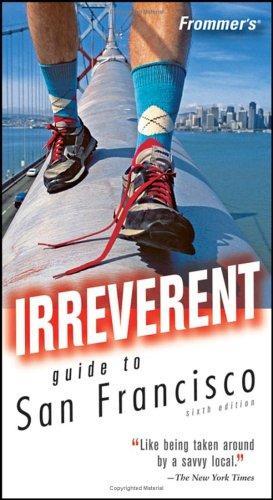
Frommer's Irreverent Guide to San Francisco
by
Matthew Richard Poole
Published 17 Mar 2006
The Paradise Lounge (South of Market) is less a club and more a rock saloon, where four separate performance rooms feature two or three acts playing simultaneously. Modern rock is the main attraction, but rockabilly, funk, acid jazz, gospel, and the spoken word are also on the bill. The Fillmore Auditorium has been synonymous with San Francisco’s rock scene since Bill Graham put on his first psychedelic concert there in 1965. Shuttered for years, the Fillmore reopened in the early ’90s to immense popularity with both fans and musicians. Tom Petty wanted to play there so badly that he appeared every night for a couple of weeks in order to make enough money to pay his band (which usually plays only in huge arenas for massive amounts of money).
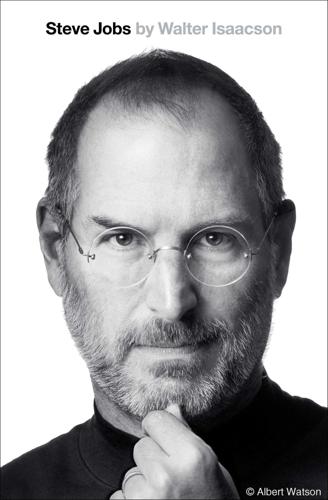
Steve Jobs
by
Walter Isaacson
Published 23 Oct 2011
He said, “She didn’t even invite me.” There were, however, some nice times during those years, including one summer when Lisa came back home and performed at a benefit concert for the Electronic Frontier Foundation, an advocacy group that supports access to technology. The concert took place at the Fillmore Auditorium in San Francisco, which had been made famous by the Grateful Dead, Jefferson Airplane, and Jimi Hendrix. She sang Tracy Chapman’s anthem “Talkin’ bout a Revolution” (“Poor people are gonna rise up / And get their share”) as her father stood in the back cradling his one-year-old daughter, Erin. Jobs’s ups and downs with Lisa continued after she moved to Manhattan as a freelance writer.

Machines of Loving Grace: The Quest for Common Ground Between Humans and Robots
by
John Markoff
Published 24 Aug 2015
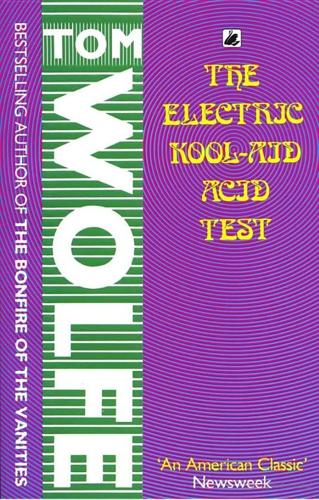
The Electric Kool-Aid Acid Test
by
Tom Wolfe
Published 1 Jan 1968
The big night, Saturday night, was going to be called The Acid Test, featuring Ken Kesey and the Merry Pranksters. Kesey and the Pranksters were primed for the Festival. Even Mountain Girl was on hand. She had wrestled the thing out in her mind and was back on the bus. The Pranksters had just held an Acid Test at the Fillmore Auditorium, a big ballroom in the middle of one of San Francisco's big Negro slums, the Fillmore district. It was a wild night. Hundreds of heads and bohos from all over the Bay area turned out, zonked to the eyeballs. Paul Krassner was back in town, and he heard the word that was out on . .. The Scene. Everybody would be "dropping acid" about 5 or 6 P.M. to get ready for the Acid Test to begin that night at nine o'clock at the Fillmore Auditorium.
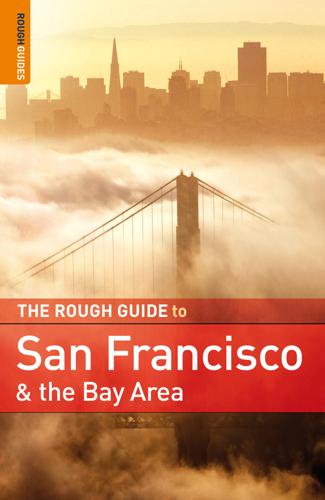
Rough Guide to San Francisco and the Bay Area
by
Nick Edwards
and
Mark Ellwood
Published 2 Jan 2009
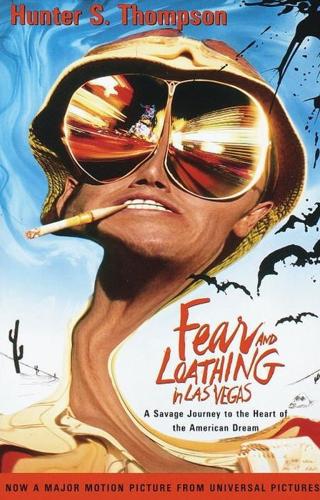
Fear and Loathing in Las Vegas
by
Hunter S. Thompson
and
Ralph Steadman
Published 31 Dec 1970
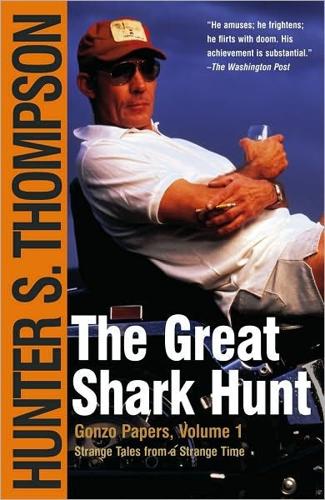
The Great Shark Hunt: Strange Tales From a Strange Time
by
Hunter S. Thompson
Published 6 Nov 2003
Haight Street, the Great White Way of what the local papers call "Hippieland," is already dotted with stores catering mainly to the tourist trade. Few hippies can afford a pair of $20 sandals or a "mod outfit" for $67.50. Nor can they afford the $3.50 door charge at the Fillmore Auditorium and the Avalon Ballroom, the twin wombs of the "psychedelic, San Francisco, acid-rock sound." Both the Fillmore and the Avalon are jammed every weekend with borderline hippies who don't mind paying for the music and the light shows. There is always a sprinkling of genuine, barefoot, freaked-out types on the dance floor, but few of them pay to get in.
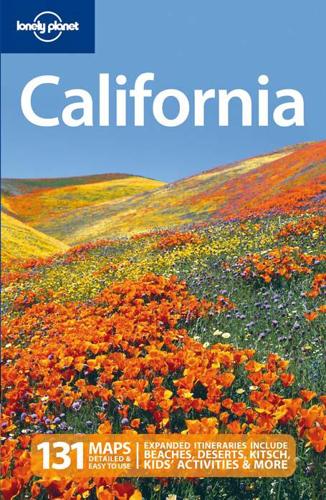
California
by
Sara Benson
Published 15 Oct 2010
Jimi Hendrix turned the American anthem into a tune suitable for an acid trip, and Jefferson Airplane turned Lewis Carroll’s children’s classic Alice’s Adventures in Wonderland into the psychedelic hit ‘White Rabbit.’ Jim Morrison and The Doors blew minds from the Sunset Strip to San Francisco. Sooner or later, most of these Fillmore auditorium Click here headliners wound up ODing in San Francisco’s Haight district, and those that survived eventually cleaned up and cashed out – though for original jam-band the Grateful Dead, the song remained the same until guitarist Jerry Garcia’s passing in rehab in 1995. * * * Waiting for the Sun: Strange Days, Weird Scenes and the Sound of Los Angeles, by British rock historian Barney Hoskyns, follows the twists and turns of the late-20th-century SoCal music scene
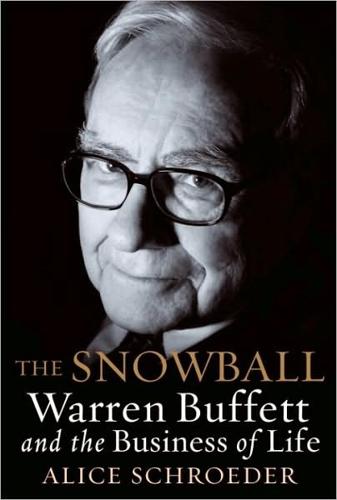
The Snowball: Warren Buffett and the Business of Life
by
Alice Schroeder
Published 1 Sep 2008